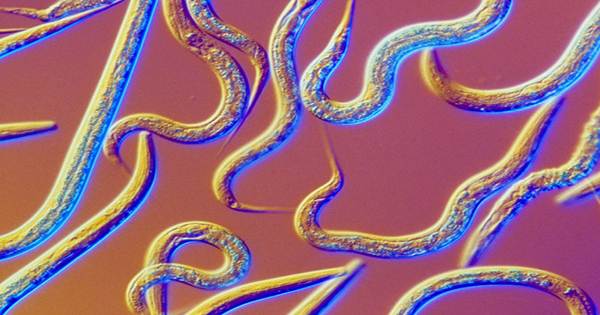Roundworm Caenorhabditis elegans is one of the most studied species on earth, but it retains the ability to surprise or even surprise scientists. The most recent discovery is that worms can avoid eating blue bacteria. This is wise since blue identifies microorganisms as toxic. This is completely strange because these insects lack cells not only in the eyes but also in the processing light. C. elegans feed on microorganisms to digest organic matter. Some of these germs use chemical warfare to avenge what they eat, but it not used much after eating them until their toxic status is recognized.
The red signal just as macroscopic animals can carry toxins, so does the bacterium Pseudomonas aeruginosa with their dangerous chemical, the blue pigment pyocyanin. Unlike anything they can see, it is a smart defense, but C Elegance cannot. Nevertheless, biologists have noticed that insects still avoid pyocyanin -producing bacteria, for the sake of their health. Most biologists assume that C. elegans must be P. in addition to color. Can detect more about aeruginosa, possibly chemical sensitive through odor?
Nitabach said in a statement, Yale University professor Michael Nitabach saw no reason to doubt the idea, but fortunately, one of his former students for science, Dipon Ghosh, did. Ghosh thought there might be a way to detect color in insects. “I told him he was being ridiculous.” Ghosh persuaded and persuaded Nitbach to help test his extraordinary conjecture. In science, they report that elegans can actually distinguish short-wavelength visible radiation (what the rest of us call blue light) from other spectra, even though there is no lack of organs.
This pairing avoided by worms with pyocyanin -colored colored innocent bacteria – least when there was enough light to detect them. In the case of pyocyanin drying insects, the authors tried another blue color, and c. Elegance avoided it. However, when optical filters used to remove blue light, the insects were eager to feed again. However, some of the earlier assumptions were true. The authors attempted 59 wild strains of C. elegans that have evolved in a variety of situations.
While some appeared to be more dependent on blue-light sensitivity, others more affected by chemical detection, meaning that insects adapted to their environment in order to prioritize one environment or another. Still, worms are different from knowing how blue looks. Some flatworms and deep-sea animals contain patches of specialized photoreceptor cells that allow them to separate light from darkness, but lack lenses to focus on an actual image.
However, C. elegans even lacks this level of optical development. They do not even have the opsin photoreceptor gene, which thought to be responsible for light detection in other animals. However, Ghosh and Nitabach were able to identify two proteins that allow the color of the two city algae to understand short-wavelength light and the genes they produce. This makes it possible to expand the study of the differences between the C. elegans strains. This is not the first time the C. elegans have achieved more. After all, is an insect that performs calculus despite the lack of a brain?















